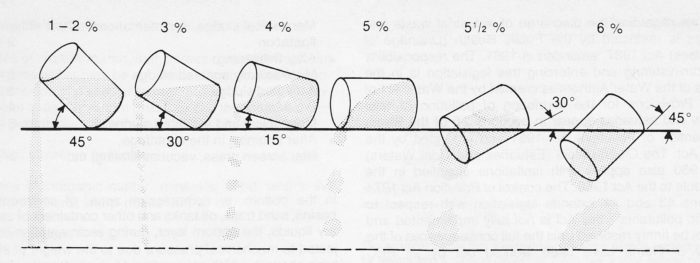7.7 Properties of paper pulp pumping
Properties of paper pulp pumping
Knowing properties for pumping paper pulp is essential to understand the challenges for the pump and pump system. Pulp is used in the cellulose and paper industries. It is a name for fibre suspensions in water. Pulps belong to the non-Newtonian liquids; group 1, the time-independent, plastic liquids.
The density of a pulp can be worked out in accordance with equation 7.4a, with reservation for possible air content. Often the affects of the fiber´s and air cancel each other out. The density then coincides with that of the water.
Pulps exhibit widely varying pH values, depending on the production method and the bleaching process. Pumps made of acid-resistant steel are usually needed.
Pulp quality
The pumping characteristics of pulp depends, in the first instance, upon the raw material used, the additives and the method of production. Examples of raw materials used are
- coniferous (soft) wood (fibre Iength 3-4 mm)
- deciduous (hard) wood (fibre Iength 1-1.5 mm) and
- rag (fibre Iength 25-30 mm)
Basically the methods of production can be divided into chemical and mechanical methods. The chemical method is most common. Sulphate and sulphite pulps are produced both bleached and unbleached. The most important pulp to be produced mechanically is groundwood pulp. Aside from the concentration, the Dry Substance (DS) content, the flow characteristics of the pulp are also effected by the fibre ratio, the Iength and diameter and the degree of pulverization.
Content of air in pulp
Pulp differs from many other suspensions in that it consists of three phases: water, solid-fibre and air. Air in the pulp occurs either in the form of bubbles or in a combination. Air occurs as bubbles either in a free form or attached to the fibre. Air in the combined form occurs in solution in the water or absorbed in the fibre. The content of air in the pulp depends upon quality, concentration, additives, pulverisation, temperature and time and also the pulp handling process. Groundwood pulp contains more air than sulphate or sulphite pulp. Beater sizing increases the air content considerably as does pulverising.

Figure 7.7a Illustration of fluidity of paper pulp. The percentage figures given indicate the DS content.
Increase in temperature increases the content of free air whilst the ability of air to dissolve in water decreases. Generally speaking, the air content of pulp reduces in storage. The air content of pulp increases quickly to a certain level specific to each type of pulp when mixed with air. This happens typically when the pulp is allowed to fall freely into a vessel or cistern. Air can also be taken up by the pulp at shaft seals in pumps if there is a vacuum.
Pulp properties which complicate pumping
- Content of solid particles, i.e. concentration. The pulp fibers build up a webb like bond that becomes denser with increased concentration. It is relatively difficult to put pulp with high concentration in motion, because when high energy impulses are transmitted locally in the piping system, it is likely that the bond is broken and that the movement of pulp occurs locally.
- Air Content. Air in the form of bubbles in pulp is very unfavorable from a pumping point of view. An air content of 1-2% is enough to change the pump characteristics.
- Pressure drop. At low velocity flows, the pressure drop for pulp is much higher than for water. Generally, pulp that is hot and contains additives easier to pump than cold and pure pulp.
- Re-introducing flow of pulp in a pipe system after a temporary stop (break down) can be problematic, especially with regard to highly concentrated pulp. This is because the “static pressure drop” is larger than the pressure drop at low flow rates. Dilution with water in the pump makes it easier to start.
- Disintegrating properties, i.e. flocking in pulp, wood splinter, twigs and synthetic fiber can cause flocking in the pump. A total clogging of both pump and pipe is even possible.
- Tendency of pulp to thicken in tapered ducts. Strongly tapered conical parts on the suction side of the pump, e.g. reduction of suction line from a pipe with dimension 400 mm down to 150 mm can cause flocking already at concentrations of 3-4%.
- Flow losses in pipelines.
For more information on paper pulp pump, see section on Pulp pumps
